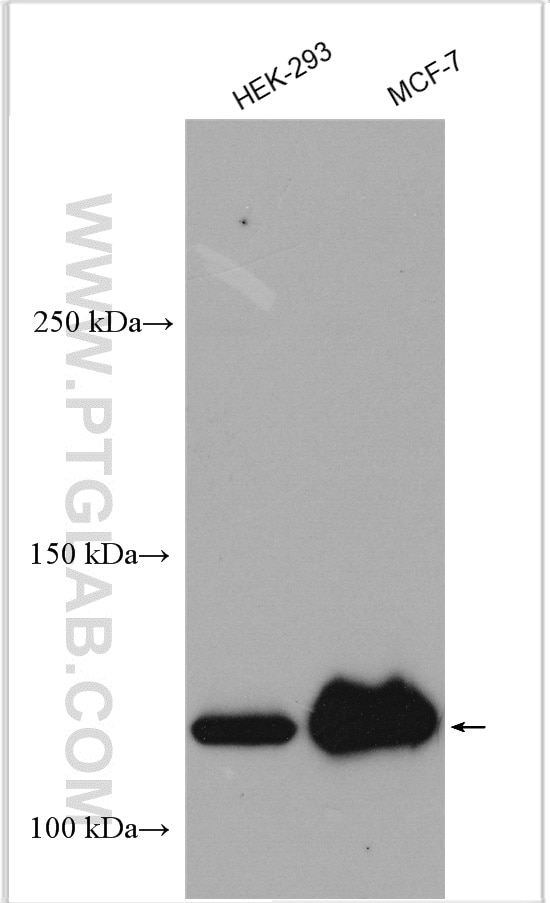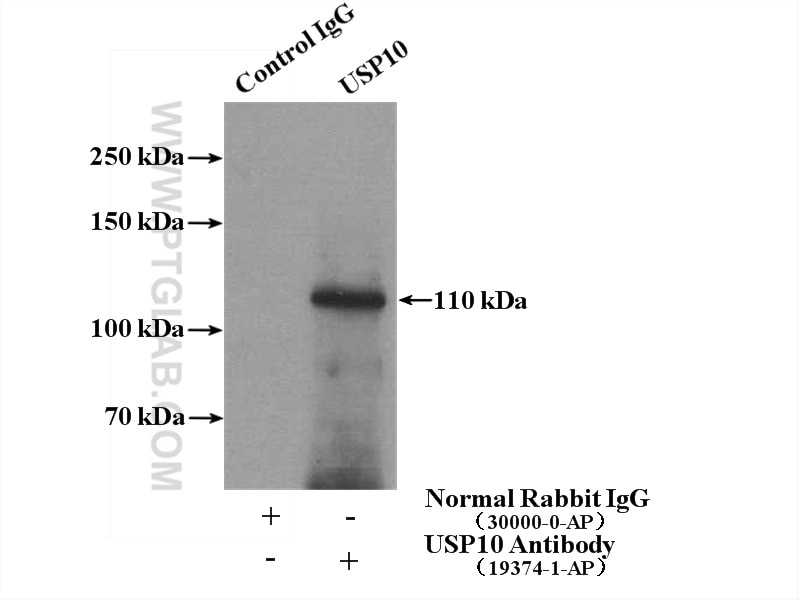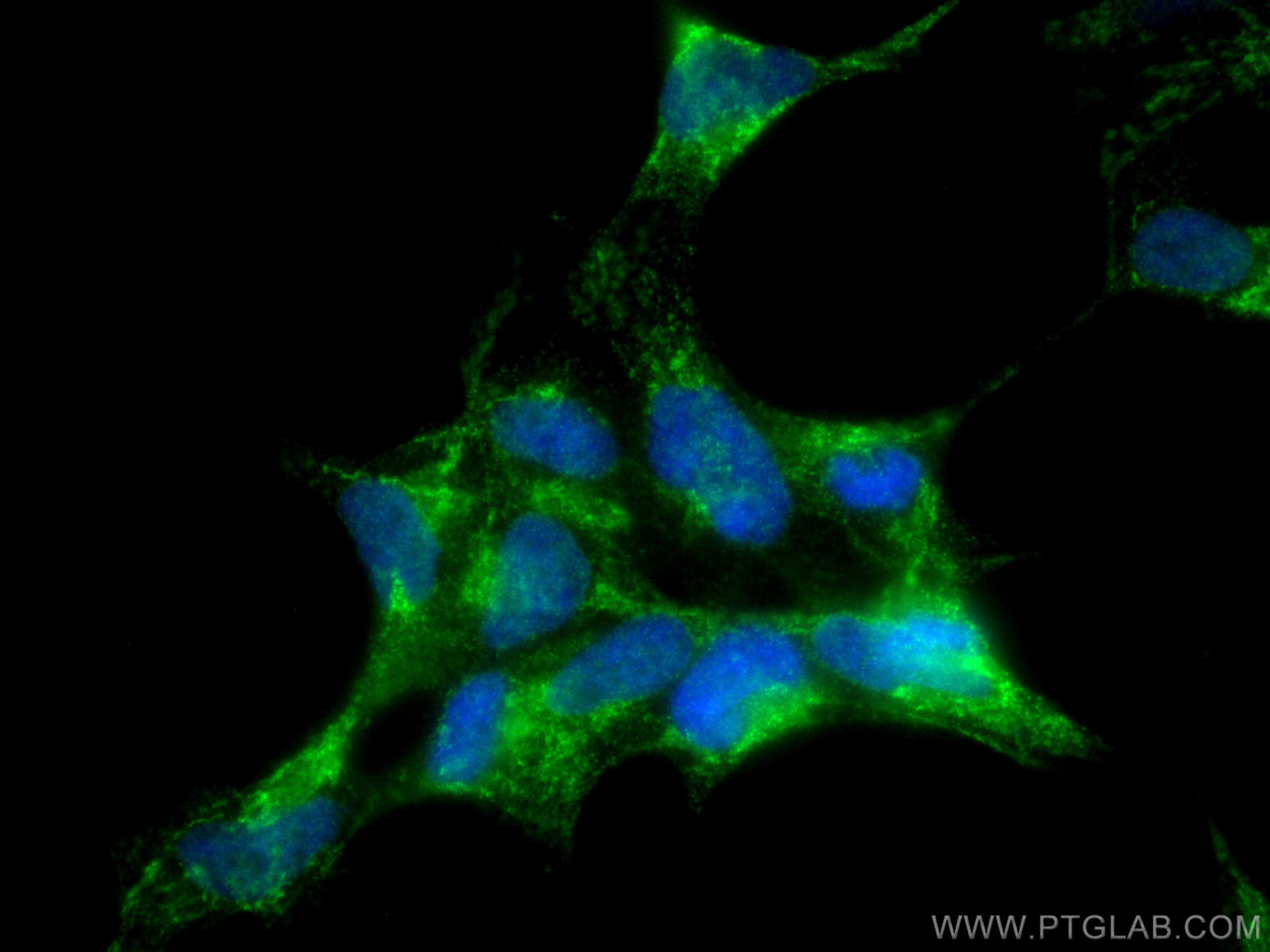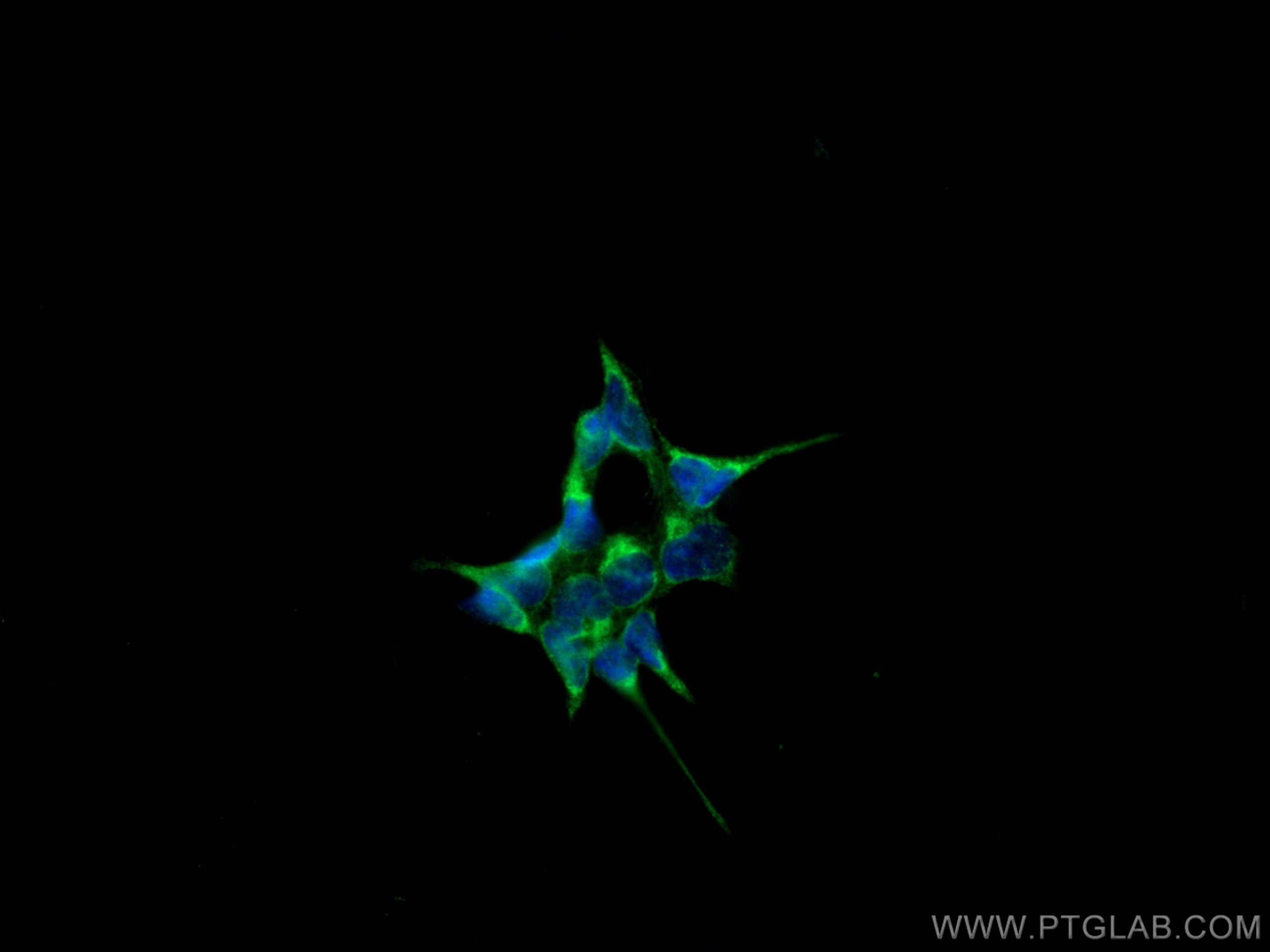- Featured Product
- KD/KO Validated
USP10 Polyklonaler Antikörper
USP10 Polyklonal Antikörper für IF, IP, WB, ELISA
Wirt / Isotyp
Kaninchen / IgG
Getestete Reaktivität
human, Maus, Ratte
Anwendung
WB, IP, IHC, IF, CoIP, ELISA
Konjugation
Unkonjugiert
Kat-Nr. : 19374-1-AP
Synonyme
Galerie der Validierungsdaten
Geprüfte Anwendungen
| Erfolgreiche Detektion in WB | MCF-7-Zellen, HEK-293-Zellen |
| Erfolgreiche IP | HeLa-Zellen |
| Erfolgreiche Detektion in IF | HEK-293-Zellen |
Empfohlene Verdünnung
| Anwendung | Verdünnung |
|---|---|
| Western Blot (WB) | WB : 1:500-1:1000 |
| Immunpräzipitation (IP) | IP : 0.5-4.0 ug for 1.0-3.0 mg of total protein lysate |
| Immunfluoreszenz (IF) | IF : 1:50-1:500 |
| It is recommended that this reagent should be titrated in each testing system to obtain optimal results. | |
| Sample-dependent, check data in validation data gallery | |
Veröffentlichte Anwendungen
| KD/KO | See 3 publications below |
| WB | See 9 publications below |
| IHC | See 2 publications below |
| IF | See 5 publications below |
| IP | See 2 publications below |
| CoIP | See 1 publications below |
Produktinformation
19374-1-AP bindet in WB, IP, IHC, IF, CoIP, ELISA USP10 und zeigt Reaktivität mit human, Maus, Ratten
| Getestete Reaktivität | human, Maus, Ratte |
| In Publikationen genannte Reaktivität | human, Maus |
| Wirt / Isotyp | Kaninchen / IgG |
| Klonalität | Polyklonal |
| Typ | Antikörper |
| Immunogen | USP10 fusion protein Ag7233 |
| Vollständiger Name | ubiquitin specific peptidase 10 |
| Berechnetes Molekulargewicht | 87 kDa, 92 kDa |
| Beobachtetes Molekulargewicht | 100-130 kDa |
| GenBank-Zugangsnummer | BC000263 |
| Gene symbol | USP10 |
| Gene ID (NCBI) | 9100 |
| Konjugation | Unkonjugiert |
| Form | Liquid |
| Reinigungsmethode | Antigen-Affinitätsreinigung |
| Lagerungspuffer | PBS mit 0.02% Natriumazid und 50% Glycerin pH 7.3. |
| Lagerungsbedingungen | Bei -20°C lagern. Nach dem Versand ein Jahr lang stabil Aliquotieren ist bei -20oC Lagerung nicht notwendig. 20ul Größen enthalten 0,1% BSA. |
Hintergrundinformationen
USP10, also named as USP32 and NY-REN-60, belongs to the peptidase C19 family.The deubiquitinating protease USP10 has been identified as a new regulator of p53 in the DNA damage response and tumor development.
Protokolle
| Produktspezifische Protokolle | |
|---|---|
| WB protocol for USP10 antibody 19374-1-AP | Protokoll herunterladen |
| IF protocol for USP10 antibody 19374-1-AP | Protokoll herunterladen |
| IP protocol for USP10 antibody 19374-1-AP | Protokoll herunterladen |
| Standard-Protokolle | |
|---|---|
| Klicken Sie hier, um unsere Standardprotokolle anzuzeigen |
Publikationen
| Species | Application | Title |
|---|---|---|
Cell G3BP1 Is a Tunable Switch that Triggers Phase Separation to Assemble Stress Granules. | ||
Mol Cell Translational Repression of G3BP in Cancer and Germ Cells Suppresses Stress Granules and Enhances Stress Tolerance. | ||
Cell Death Differ Targeting USP10 induces degradation of oncogenic ANLN in esophageal squamous cell carcinoma
| ||
Nat Commun Targeting USP47 overcomes tyrosine kinase inhibitor resistance and eradicates leukemia stem/progenitor cells in chronic myelogenous leukemia.
| ||
J Cell Biol High-fidelity reconstitution of stress granules and nucleoli in mammalian cellular lysate. | ||
Rezensionen
The reviews below have been submitted by verified Proteintech customers who received an incentive forproviding their feedback.
FH Gonzalo (Verified Customer) (03-21-2018) | Great antibody for WB and IP
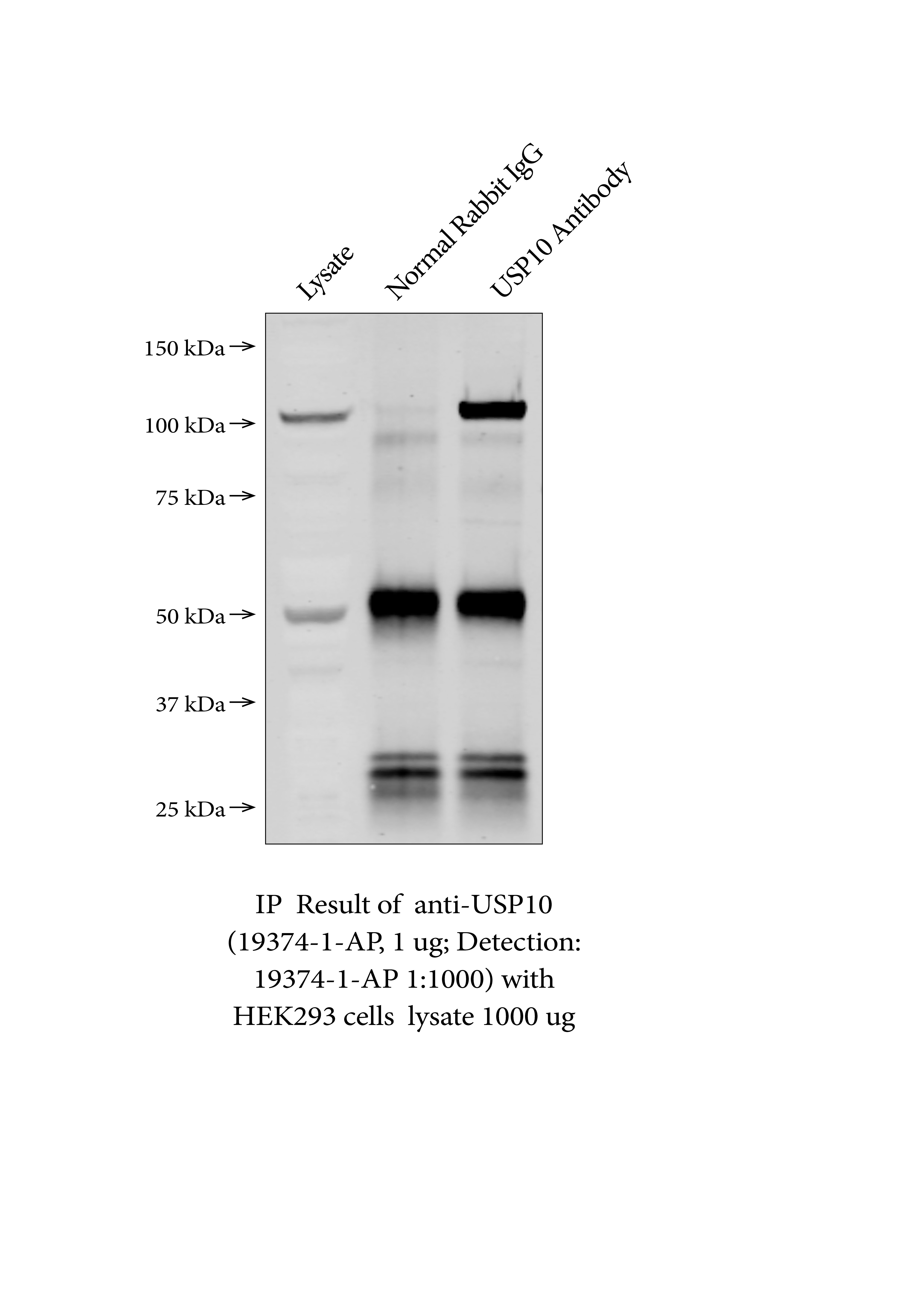 |
